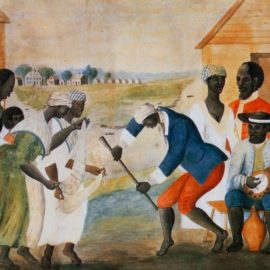

This article is an excerpt from the Shortform summary of "The Hiding Place" by Corrie ten Boom. Shortform has the world's best summaries of books you should be reading.
Like this article? Sign up for a free trial here .
Who was the man known as “Bulldog” and what happened to him? How did Harry de Vries affect Corrie ten Boom?
Harry de Vries was a formerly Jewish man in Haarlem who was always seen walking bulldogs. He was persecuted for being Jewish even though he converted to Christianity.
Learn more about Harry de Vries and his fate.
A Solemn Pledge
The decision to join the Resistance was a turning point for Corrie. She knew that working with the underground would mean lying, defying authority, stealing, forging, and possibly even violence, all of which was in direct violation of her bedrock Christian faith. Yet that same faith also told her she could not sit idly by while her neighbors were being persecuted. She prayed for the answer to the question—how should a Christian act when evil is in power?
Harry de Vries and His Bulldogs
The introduction of the yellow star and the campaign of antisemitic persecution revealed to Corrie neighbors whom she hadn’t known were Jewish. One of them was a man she and her sisters had known only as “Bulldog,” so named because he was always to be seen walking his beloved bulldogs through the streets of Haarlem.
One day, Corrie and Casper saw him on the streets, without his dogs. Concerned, they asked him what had happened to his pets. At a visit to his home that evening, he tearfully revealed the truth—he had euthanized his pets by poisoning them. As a Jew, he was not allowed to have animals and he couldn’t bear the idea of them being taken away from him by the Germans.
Bulldog, whose real name was Harry de Vries, explained that he didn’t even think of himself as Jewish. He was born a Jew, but he had long since converted to Christianity, and his wife had always been a Christian. But this was no protection from Nazi ideology, which saw Jewishness as a matter of blood and race, not professed religion.
It was impossible not to think about the enormous risks she and her circle were running by this time. In early 1943, the hiding place to which the Resistance had sent Harry de Vries after his brief sojourn at the Beje was discovered by the Gestapo. In the ensuing raid, Harry was rounded up and taken to the police station in Amsterdam. Corrie did manage to see him one final time before he was transported to Amsterdam and from there, most likely out of the country to a concentration camp.
Saying Goodbye to Harry
The police officer Rolf (who had spotted Fred Koonstra delivering ration cards at the Beje the previous summer) arranged this meeting, letting slip to Corrie the day Harry was to be sent away—apparently, Rolf had some sympathies with the Resistance. When she said goodbye to Harry de Vries at this meeting, Corrie knew she would never see him again.

———End of Preview———
Like what you just read? Read the rest of the world's best summary of Corrie ten Boom's "The Hiding Place" at Shortform .
Here's what you'll find in our full The Hiding Place summary :
- Why devout Christian Corrie ten Boom decided to stand up to the Nazi occupation
- How ten Boom and the Jewish neighbors she was hiding were caught
- How ten Boom survived the concentration camp and left with even stronger faith






